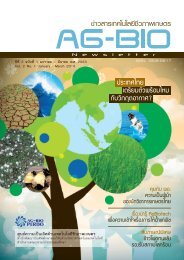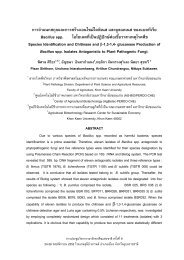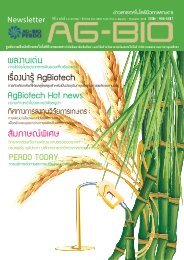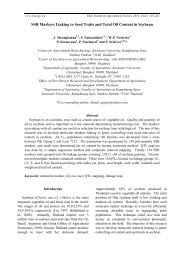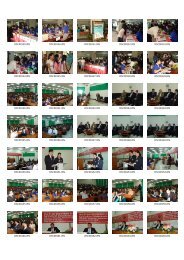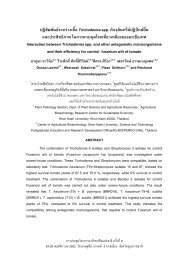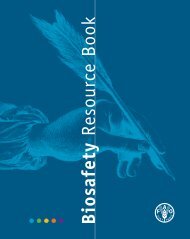Biosafety Manual PDF - Lawrence Berkeley National Laboratory
Biosafety Manual PDF - Lawrence Berkeley National Laboratory
Biosafety Manual PDF - Lawrence Berkeley National Laboratory
Create successful ePaper yourself
Turn your PDF publications into a flip-book with our unique Google optimized e-Paper software.
<strong>Biosafety</strong> <strong>Manual</strong><br />
IBC-approved version (May 18, 2010)<br />
1.0 Introduction<br />
1.1 Policy<br />
Work with or potential exposure to biological materials in the course of performing research or<br />
other work activities at <strong>Lawrence</strong> <strong>Berkeley</strong> <strong>National</strong> <strong>Laboratory</strong> (LBNL) must be conducted in<br />
a safe, ethical, environmentally sound, and compliant manner. Work must be conducted in<br />
accordance with established biosafety standards, the principles and functions of Integrated<br />
Safety Management (ISM), this <strong>Biosafety</strong> <strong>Manual</strong>, Chapter 26 (<strong>Biosafety</strong>) of the Health and<br />
Safety <strong>Manual</strong> (PUB-3000), and applicable standards and LBNL policies.<br />
1.2 Purpose<br />
The purpose of the <strong>Biosafety</strong> Program is to protect workers, the public, agriculture, and the<br />
environment from exposure to biological agents or materials that may cause disease or other<br />
detrimental effects in humans, animals, or plants. This manual provides workers; line<br />
management; Environment, Health, and Safety (EH&S) Division staff; Institutional <strong>Biosafety</strong><br />
Committee (IBC) members; and others with a comprehensive overview of biosafety principles,<br />
requirements from biosafety standards, and measures needed to control biological risks in work<br />
activities and facilities at LBNL.<br />
1.3 Scope<br />
This <strong>Biosafety</strong> <strong>Manual</strong> and the <strong>Biosafety</strong> Program apply to biosafety issues related to worker<br />
safety, public health, agricultural protection, and environmental protection for work activities at<br />
locations where LBNL has Environment, Safety, and Health (ES&H) management<br />
responsibilities. The work must also include:<br />
• Biological materials, agents, and other materials of biological origin (e.g., organisms,<br />
cells, viruses, and toxins) that pose different levels of risk to humans, animals, or plants<br />
when stored or used; or<br />
• Workers who may be exposed to disease-causing biological agents related to<br />
designated job duties (e.g., bloodborne pathogens in health care).<br />
The <strong>Biosafety</strong> <strong>Manual</strong> addresses:<br />
• <strong>Biosafety</strong> risk assessment and containment controls.<br />
• Principles, programmatic elements, and controls required by ISM and the biosafety<br />
standards outlined in PUB-3000, Section 26.5.<br />
1.4 <strong>Manual</strong> Administration and Presentation<br />
The <strong>Biosafety</strong> <strong>Manual</strong> was written by the EH&S Division, and approved by the IBC and the<br />
EH&S Division <strong>Biosafety</strong> Officer. The EH&S Division Director provides management approval.<br />
The <strong>Biosafety</strong> <strong>Manual</strong> is presented in a manner that:<br />
• Further describes requirements outlined in PUB-3000, Chapter 26 (<strong>Biosafety</strong>).<br />
• Integrates similar requirements by topic from different biosafety standards and LBNL<br />
policies, and explains when certain requirements are applicable to specific work.<br />
Printed copies are not official versions of this manual. Before using the printed copy, verify that it is the most current version.<br />
8



